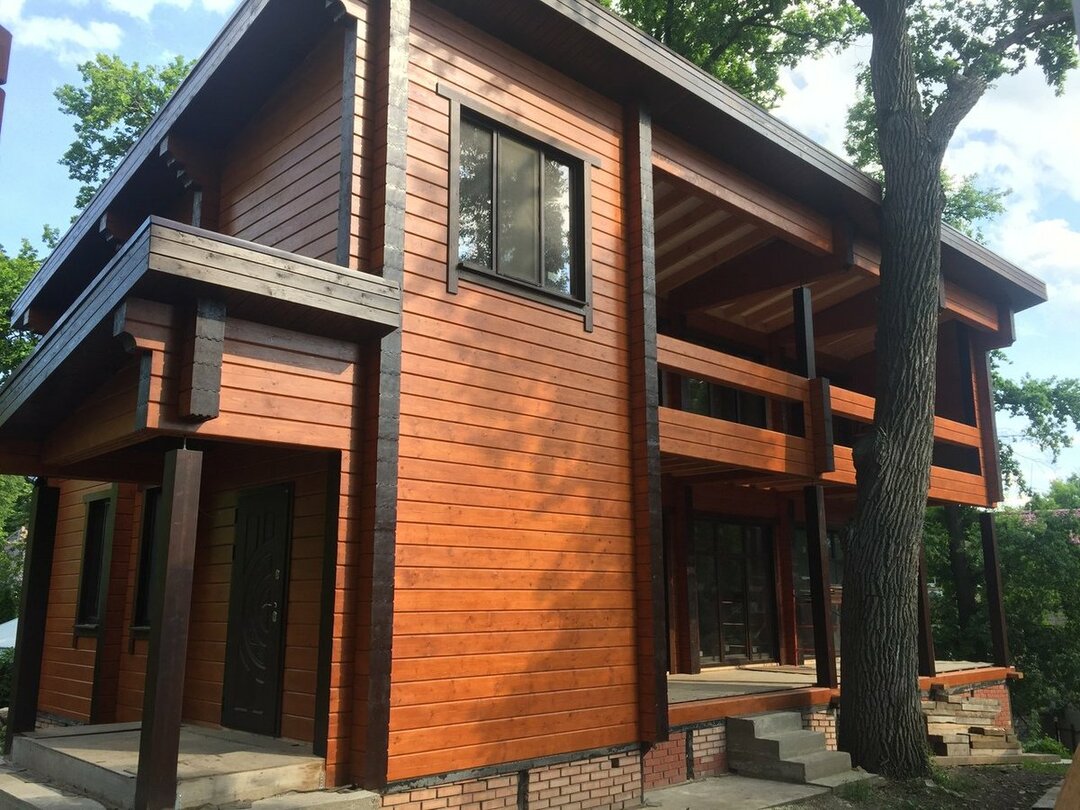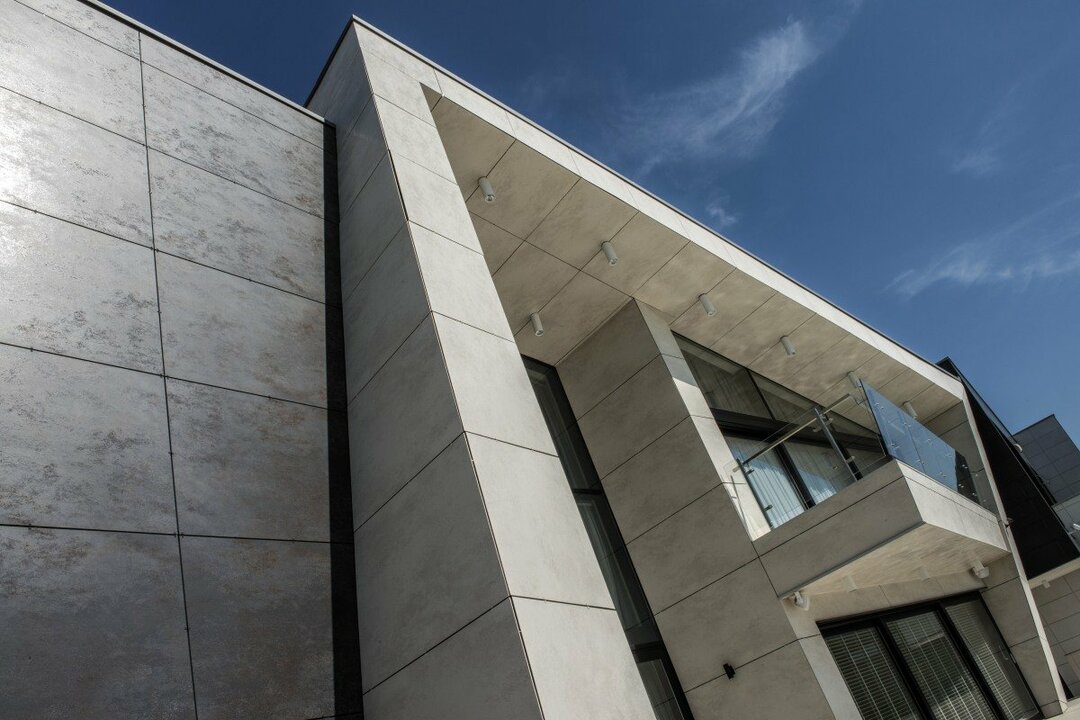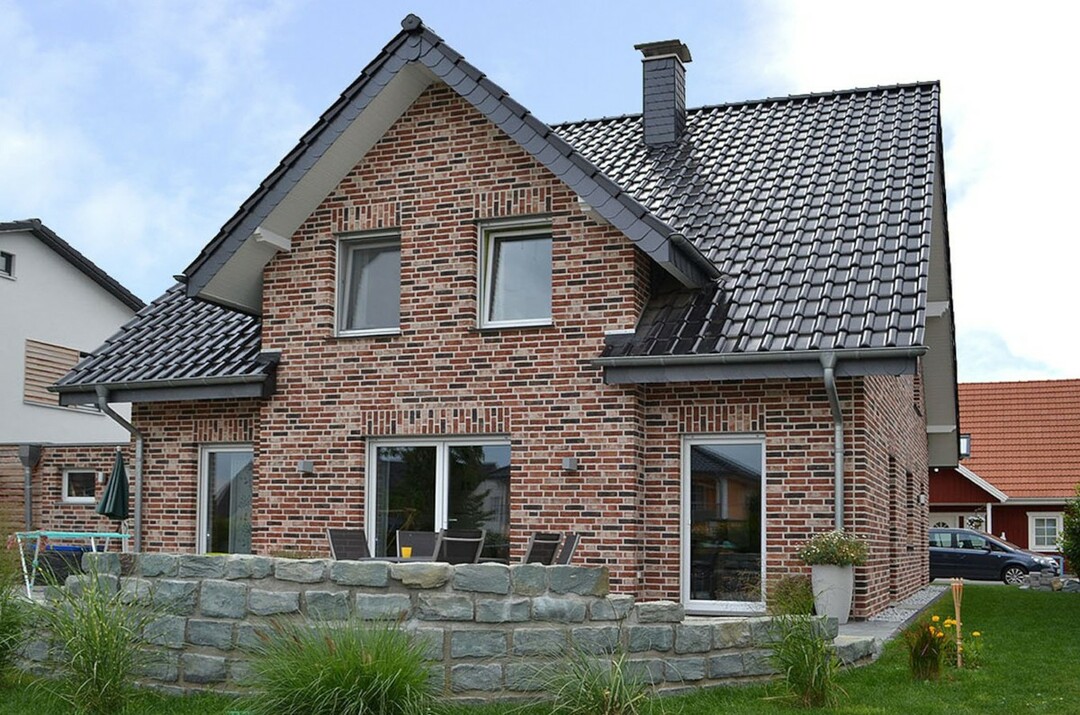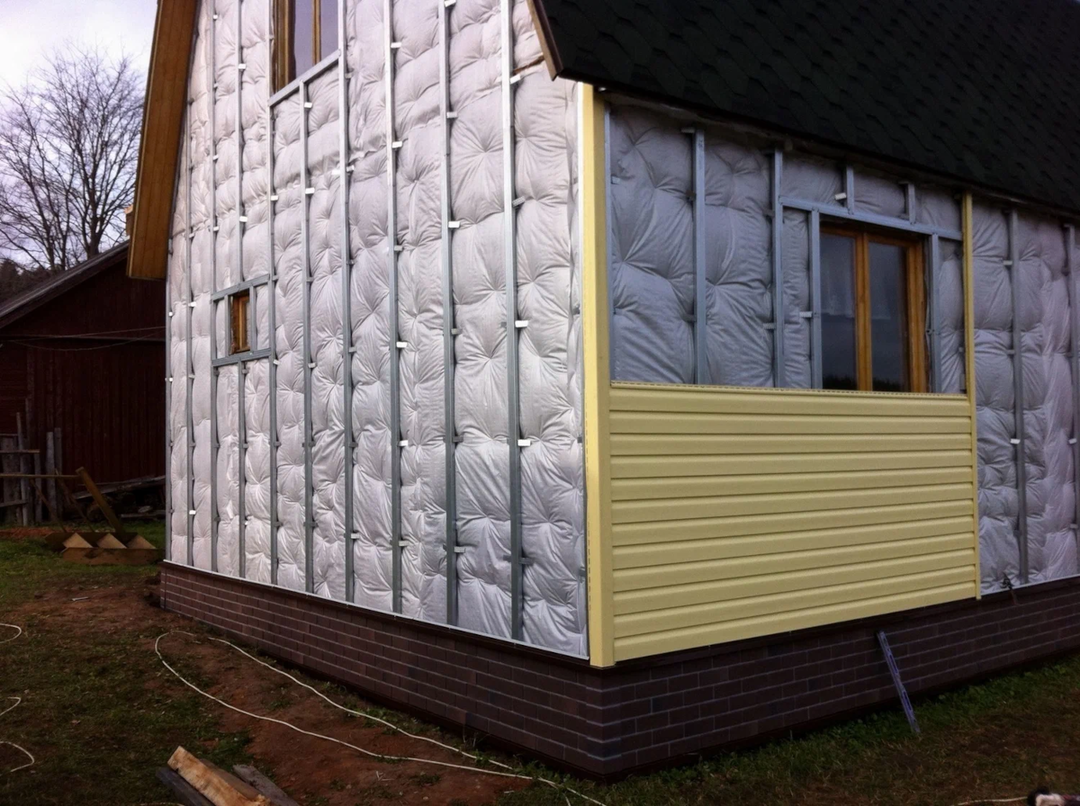At the final stage of construction, questions arise: what to cover the outside of the house with, what finishing materials should be chosen for the house, and how long will they last? We offer you the fastest finishing methods from the best inexpensive facade cladding products.
The easiest and most inexpensive way to cover the outside of a house: decorative plaster
Content
- The easiest and most inexpensive way to cover the outside of a house: decorative plaster
- Mineral facade plaster
- Mineral decorative
- Acrylic
- Silicone
- Top 7 best materials for exterior house cladding
- Siding (vinyl wall, vinyl basement, metal)
- Facing stone
- Imitation of timber
- Porcelain tiles
- Concrete tiles
- Clinker tiles
- Wood-polymer composite panels
- Requirements for façade cladding materials
- Proper preparation for cladding the outside of a house with your own hands

Making the outdoor side of your home attractive is not cheap, but there are several effective waysHow to make the façade of a building spectacular without spending a lot of money. Construction stores offer homeowners a variety of interesting options to suit every budget and decorating style. We have selected the most the best facing materials, which will protect the building from weather influences.
Plaster is the most accessible and inexpensive type of facade finishing. For processing 12 sq. m it will only take you 700 rub. behind 25 kg high-quality decorative dry mixture.
You can also use standard street plaster, giving it texture. In this case it will cost 2 times cheaper.
Pros of plaster:
- Vapor permeability. Low probability of mold and mildew.
- Environmental friendliness. Cement or gypsum in the composition is much safer than plastic.
- Easy to care for. The walls can be easily cleaned of dirt, and cracks can be re-plastered.
- Variability. Having chosen the texture, add any shade to the composition to update the design.
Mineral facade plaster

The traditional and economical type of plaster mixtures is intended for external work. to protect your home from weather conditions. Leveling plaster is prepared using a mixture of cement and lime. Thanks to the cement in the composition and the absence of an airtight coating, excess moisture does not remain in the building. A bag of the simplest dry mixture 25 kg costs 220-250 rub.. On 1 sq. m leaves 12-15 kg and costs accordingly 110-125 rub.. Here you can add primer, facade paint and work.
Pros:
- strength and durability;
- resistance to dirt, fungus, mold, mechanical stress;
- thanks to the porous structure, the walls of the house breathe;
- fast setting.
Minuses:
- instability to microcracks.
Mineral decorative

One of the simplest and most popular facing materials. The mineral composition is compatible with all building materials and heat insulators. Bag 25 kg costs on average 675 rub., inexpensive finishing of the building facade will cost from 250 to 400 rub./m2.
Pros:
- resistance to precipitation and weathering;
- high fire and environmental safety;
- strength and adhesion;
- a wide range of;
- affordable price;
- ease of care.
Minuses:
- small selection of colors;
- inelasticity.
Acrylic

The service life of the elastic acrylic coating reaches 20-30 years, if the facing material is made on a silicate basis. Plaster can be purchased ready-made or in the form of a dry mixture, which is diluted with water to the desired consistency. 1 kg the mixture is worth 70-90 rub., finishing will cost 100-300 rub. per sq. m, not counting the costs of leveling, priming, labor and painting.
Pros:
- durability;
- convenience of packaging to choose from;
- reasonable price.
Silicone

It is highly resistant to stains. 1 kg silicone-based façade plaster costs 150–200 rub.. Behind 1 sq. m I'll have to give it back from 350 to 800 rub..
Pros:
- moisture resistance;
- resistance to stains.
Minuses:
- not cheap;
- inconvenience when applying it yourself.
Top 7 best materials for exterior house cladding
To give an aesthetic appearance wooden facade Decorative materials are used that differ in manufacturing composition and performance properties. The price range here is also very large - on average 742 rub. (0.5 sq. m).
Siding (vinyl wall, vinyl basement, metal)

Many homeowners call siding the best product for facade finishing, as it is easy to install on your own. The panels are made from PVC, which means the choice of shades, textures and design ideas is not limited here. Vinyl panels are especially popular because they can be purchased at a low cost, are lightweight and have a long service life.
Even inexpensive polyvinyl chloride if all requirements are met can last up to 50 years.
Pros:
- Long service life. Vinyl siding does not corrode like metal or wood.
- Aesthetic appearance. The neat plastic looks very attractive from a distance.
- Easy to install. The panels do not require preparation, are easily raised to a height, and are attached with ordinary self-tapping screws.
- Low cost. Panel length 3m will cost approximately from 100 to 120 rubles.
Minuses:
- requires additional insulation;
- low impact resistance;
- may make a squeaking noise.
Types of siding:
- Vinyl wall. The thickness of the inexpensive and aesthetic coating is approx. 1.1 mm.1 sq. m domestic siding costs from 165 to 500 rub. 1 sq. m material from foreign manufacturers will cost up to 1,000 rub.. This price range is due to the type of outer coating layer. Classic cladding is cheaper, but wood texture or acrylic coating will cost the buyer more.
- Vinyl base. Such facade panels are more wear-resistant and more expensive than wall panels, as they have high mechanical strength and greater thickness. The cost of the sheet starts from 470 rub./m2 and end 1300 RUR/m2. You will have to pay for imported products by 1-2 thousand rub. more.
- Metal. The cost of metal siding depends on the type of coating and sheet thickness. Domestic polyester coating costs from 260 rub., Finnish material – from 800 rub./m2.
Facing stone

Leads the ranking in terms of decorative qualities facing stone. It is often used in combination with other cladding. Average cost per 1 sq. m amounts to 1470 rub. Installation of artificial stone cladding It is better to entrust it to professional finishers.
Pros:
- reliability;
- lighter and cheaper than natural stone;
- environmental friendliness;
- resistance to weather and mechanical influences.
Minuses:
- high price;
- difficult to install on your own.
Imitation of timber

Aesthetically versatile material is used for exterior and interior decoration, enhancing the aesthetics of the home. Finishing thermowood has resemblance to clapboard, but thicker. Pine, larch, and cedar are used as the base. Pine panels stand 220 rub. and higher. Larch material – from 800 rub. up to 1400 rub. per sq. m.
Pros:
- environmental friendliness;
- sound-absorbing properties;
- excellent thermal insulation characteristics;
- availability;
- ease of installation;
- presentable appearance.
Minuses:
- low fire safety;
- the need for treatment with fire retardants.
Porcelain tiles

Natural stone tiles are expensive, so they often choose a modern analogue - façade porcelain tiles. This high-strength finishing material is made from clay, quartz and other composites by semi-dry pressing. Average cost of tiles 12-16 mm 1792 rub. for 1 sq. m.
You can choose a uniform or mosaic structure, matte or polished surface.
Pros:
- practicality;
- strength, durability;
- wide selection of textures, shades;
- retains its original appearance for a long time;
- moisture resistance.
Cons
- high price;
- weight;
- specific installation.
Concrete tiles

High-quality facing tiles are made from sand and cement with composites and dyes. Thanks to innovative developments, it is possible to obtain products with a matte or glossy surface. The durable surface of the facing material is perfectly held by the adhesive. 1 sq. m on average costs 1,250 rubles.
Pros:
- availability;
- durability;
- withstands external influences;
- excellent performance properties;
- affordable price.
Minuses:
- in northern conditions the service life is shorter;
- During installation it is necessary to remove the edge.
Clinker tiles

Material imitates brick or stone, is actively used in interior and exterior decoration of buildings. Eco-friendly tiles are produced from clay and natural dyes, so the average price is 2500 rub. for 1 sq. m.
Pros:
- durable material;
- attractiveness;
- unlimited number of shades and textures;
- performance characteristics;
- affordable service.
Minuses
- the most expensive type of finishing.
Wood-polymer composite panels

WPC panels have similarity to natural wood, only more durable and last longer. Siding consists of shavings, polymer compounds and dyes. Wood-polymer composite costs on average 1490 rub./sq. m. The high cost is due to foreign production.
Pros:
- resistance to various atmospheric conditions;
- spectacular appearance;
- ease of installation;
- maintainability;
- long service life.
Minuses:
- price;
- low flammability.
Requirements for façade cladding materials

If you are renovating your home yourself, we recommend learn about the features of finishing materials. The choice of materials for facade finishing requires a professional approach and depends on many factors:
- Cladding work must be carried out using energy saving technologies.
- The design and materials of external and internal decoration should be harmonious complement each other.
- The cladding of the building should be additional protection from sunlight, humidity, noise, frost.
- The structure of materials for covering a house should be such that it there was no space for insects or microorganisms.
- Finishing materials should be combined with the roof, walls, basement and surrounding area.
What criteria should you pay attention to when choosing facing materials:
- installation technology;
- decorative characteristics;
- durability;
- reliability;
- customer reviews;
- expert opinions;
- price.
Proper preparation for cladding the outside of a house with your own hands

Before covering the facade it is necessary prepare. Regardless of the type of material used, this can be done without much difficulty:
- Check the surface of the building for foci of fungus. Clean the walls and carefully treat the façade protective agent, according to instructions.
- Clean the surface of the house from old coating and dirt, interfering with further work.
- Irregularities on a brick wall can be repaired polyurethane foam or standard cement mortar, depending on the size of the damage.
- Irregularities on wood structures are easier seal with foam, then cutting off the excess.
- Wood is processed fire retardantor other fire retardant. The brick is coated with a reinforcing compound, for example, primer.
You cannot begin siding the house after precipitation. Finishing work must be carried out only on a dry surface.
You can sheathe the outside of a house with various materials; today the choice of finishing materials for the facade is quite large. We have listed the most popular types of finishes with their own characteristics. Many options allow you to fit within 500 rub. for 1 sq. m. All you have to do is determine which one best matches the interior decoration, architecture of the house and the landscape of your area. By correctly preparing the building's façade before starting work and accurately choosing the appropriate type of finishing, you will live peacefully in an attractive and warm home.
